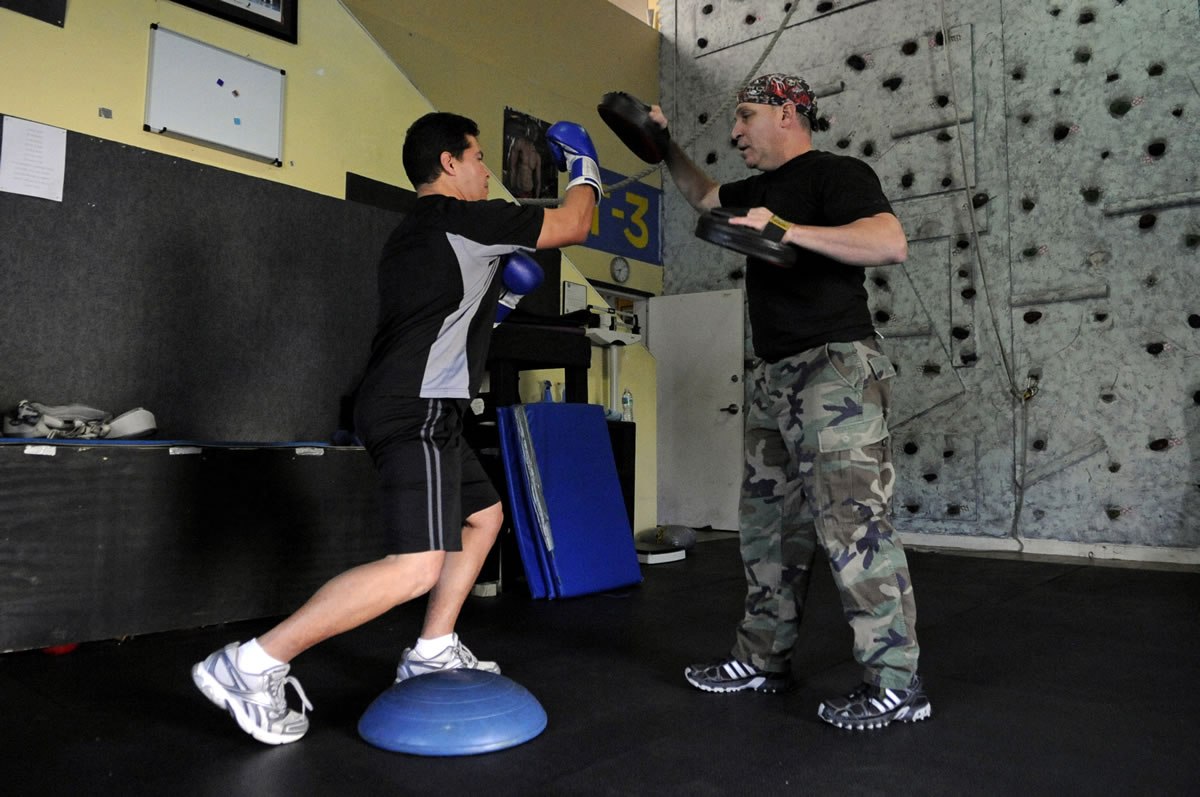FORT LAUDERDALE, Fla. — “Right uppercut! Harder, harder, harder!”
At T3 Health and Fitness in Cooper City, Fla., physical therapist Craig Marks barks instructions as he spars with William Defreitas, who swings wildly and charges forward with more jabs.
There’s an invisible opponent here: Parkinson’s disease.
Marks mixes boxing techniques into his training sessions for people with Parkinson’s disease, the neurological brain disorder affecting about 1.5 million people in the United States. It’s a concept that has been catching on in recent years, with former boxers and gym trainers throughout the country launching programs to help Parkinson’s patients looking to benefit from the pow-pow-pow, high-cardio regimen.
“Exercise at high levels can start to stimulate and produce low levels of dopamine, which is lost with Parkinson’s,” Marks said.
“I won’t hit them, but they might hit me,” added Marks, jokingly, as he continued blocking jabs during the recent morning session with Defreitas.
Parkinson’s patients take various medications to slow the march of the disease, which occurs when brain cells that produce dopamine begin to die off. People then begin to lose coordination, balance and muscle control, leading to rigid muscles and tremors that can cause loss of independence and, sometimes, depression.
For Marks, the sparring sessions began as a personal journey. His late father struggled with Parkinson’s in his 60s.
“One day I went to see my dad and he was down, feeling sorry for himself. I went to my car and grabbed my (boxing) gear pads and a light bulb went off in my head. I told him, ‘Hit the gloves. Come on.’ I started insulting him,” Marks recalled. “He got angry, stepped forward and started hitting me and running around the room. He was reacting. His adrenaline shot up.”
At the time, Marks thought his father’s physical therapy, which involved stacking multi-colored cones, wasn’t working. So he began looking into how boxing might help.
Dr. Carlos Singer, a Broward County, Fla., neurologist, said any regular exercise, whether high or low impact, can help increase levels of substance in the bloodstream that has to do with nerve cell growth.
Although he hadn’t heard of boxing therapy, he noted that exercise — whether it’s walking, dancing or shadow boxing — can improve a Parkinson’s patient’s gait, stamina, energy level and overall quality of life.
“It’s a dose of exercise,” said Singer, director of the University of Miami Miller School of Medicine’s Center for Parkinson’s Disease and Movement Disorder Center. “There are a number of studies that are showing that exercise improves functioning with Parkinson’s disease. We advise our patients to get involved with regular exercise.”
Marks trains one-on-one with his clients in a small warehouse-type setting inside an office park.
Students say the sessions help with flexibility, improve hand-eye coordination and strength building and lift their self-confidence. The workouts also help patients release their frustrations and anger associated with the condition.
Lisa McFarland, of Pembroke Pines, Fla., has been training with Marks for four years and said the intense workout helps her manage her tremors better.
When she’s boxing, “you’re having to multi-task in your head with everything that is going on,” said McFarland. “There are a lot of things that have to go on at the same time.



